Premium Only Content
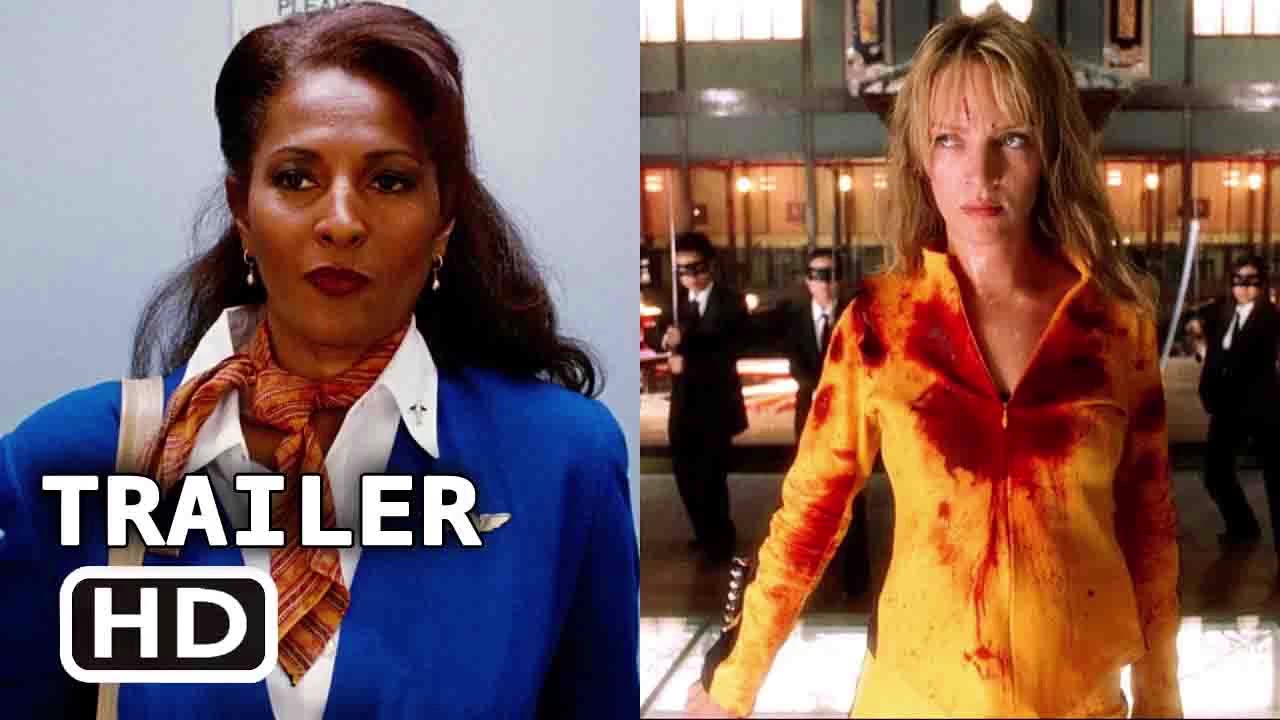
Kill Bill & Jackie Brown 4K SteelBooks® - Official Trailer
pls donate and supporting your channel
https://paypal.me/rahul232318
Kill Bill & Jackie Brown 4K SteelBooks® - Official Trailer
Three iconic films from legendary director Quentin Tarantino have been remastered in 4K UHD for the very first time! Limited edition SteelBooks® of Kill Bill: Volume 1, Kill Bill: Volume 2, and Jackie Brown are available now on Lionsgate Limited.
Jackie Brown: Quentin Tarantino scores with an explosive mix of intense action and edgy humor in his “twisty crime yarn” (Entertainment Weekly), now presented for the first time in 4K. What do a sexy stewardess (Pam Grier), a street-tough gun runner (Samuel L. Jackson), a lonely bail bondsman (Robert Forster), a shifty ex-con (Robert De Niro), an earnest federal agent (Michael Keaton), and a stoned-out beach bunny (Bridget Fonda) have in common? They’re six players on the trail of a half million dollars in cash! The only questions are... who’s going to get played... and who's going to make the big score?
Kill Bill Volume 1: The action explodes in Quentin Tarantino’s Kill Bill Volume 1, presented in eye-popping 4K for the first time. This acclaimed fourth film from groundbreaking writer and director Quentin Tarantino stars Uma Thurman, Lucy Liu, and Vivica A. Fox in an astonishing, action-packed thriller about brutal betrayal and an epic vendetta. Four years after taking a bullet in the head at her own wedding, The Bride (Thurman) emerges from a coma and decides it’s time for payback. Having been gunned down by her former boss (David Carradine) and his deadly squad of international assassins, it’s a kill-or-be-killed fight she did not start, but one she will finish. Loaded with explosive action and outrageous humor, Kill Bill Volume 1 is a must-see motion picture event.
Kill Bill Volume 2: Available in striking 4K for the first time, Kill Bill Volume 2 is the must-see movie event from writer and director Quentin Tarantino (Pulp Fiction), that completes the action-packed quest for revenge begun by The Bride (Uma Thurman) in Kill Bill Volume 1! Having already crossed two names from her Death List, The Bride is back with a vengeance and taking aim at Budd (Michael Madsen) and Elle Driver (Daryl Hannah), the only survivors from the squad of assassins who betrayed her four years earlier. It's all leading up to the ultimate confrontation with Bill (David Carradine), The Bride's former master and the man who ordered her execution! Experience the other half of the story in the acclaimed Kill Bill Volume 2 — even more mind-blowing on 4K Ultra High Definition!
Lionsgate has provided a promotional video for its upcoming 4K Blu-ray releases of Jackie Brown (1997) and Kill Bill: Volume 1 (2003) and Kill Bill: Volume 2 (2003). The releases are scheduled to arrive on the market on January 21.
JACKIE BROWN
Description: Quentin Tarantino scores with an explosive mix of intense action and edgy humor in his "twisty crime yarn" (Entertainment Weekly), now presented for the first time in 4K. What do a sexy stewardess (Pam Grier), a street-tough gun runner (Samuel L. Jackson), a lonely bail bondsman (Robert Forster), a shifty ex-con (Robert De Niro), an earnest federal agent (Michael Keaton), and a stoned-out beach bunny (Bridget Fonda) have in common? They're six players on the trail of a half million dollars in cash! The only questions are... who's going to get played... and who's going to make the big score?
Special Features and Technical Specs:
DOLBY VISION/HDR PRESENTATION OF THE FILM
Breaking Down Jackie Brown (HD) (approx 45 mins)
Jackie Brown: How It Went Down (with Play All option) (SD)
Rum Punch "Reading It Again That Night, I Fell In Love With It" (2:56)
Elmore Leonard "If You And Elmore Leonard Had A Child, That's What This Is" (3:24)
Quentin's Influences "Quentin's A Huge Fan Of The '60s And '70s" (3:59)
Pam Grier "Quentin's Been A Pam Grier Fan Forever" (5:50)
Robert Forster "And This Part Goes To Robert Forster" (5:07)
Samuel L. Jackson "He Just Says Quentin's Lines Probably Better Than Anyone" (2:49)
Robert De Niro "I'm Actually Doing A Scene With Robert De Niro!" (2:07)
Bridget Fonda "She's From A Good Bloodline Of Actors" (1:53)
Michael Keaton "And 'Bang,' He Was The Guy" (3:01)
The Production "I'm Making Movies With My Family" (7:46)
"A Look Back at Jackie Brown" - Interview with Quentin (54:38) (SD)
Chicks With Guns Video (4:51) (SD)
Siskel & Ebert "At The Movies" - Jackie Brown Review (SD) (4:44)
Jackie Brown on MTV (SD)
Jackie Brown Promotional Contest (1:03)
MTV Live Jackie Brown (14:22)
Marketing Gallery
Trailers (with Play All option)
Green Band Teaser (:50) (SD)
Theatrical Teaser (1:31) (SD)
Theatrical Teaser #2 (1:29) (SD)
TV Spots (with Play All option) (SD)
"The Chase" - Revised (:17)
"Six People" (:16)
"Scamming" (:32)
"Up For Grabs" - Revised (:17)
"Shakedown" (:32)
"Review" (:31))
"Showdown" (1:01)
"Here We Go" - Revised (:31)
Pulp Fiction Posters (stills)
Still Galleries
Enhanced Trivia Track
Deleted and Alternate Scenes
Optional English, English SDH, and Spanish subtitles for the main feature
4K BLU-RAY; REGION-FREE
BLU-RAY: REGION-A "LOCKED"
KILL BILL: VOLUME ONE
Description: This acclaimed fourth film from groundbreaking writer and director Quentin Tarantino stars Uma Thurman, Lucy Liu, and Vivica A. Fox in an astonishing, action-packed thriller about brutal betrayal and an epic vendetta. Four years after taking a bullet in the head at her own wedding, The Bride (Thurman) emerges from a coma and decides it's time for payback. Having been gunned down by her former boss (David Carradine) and his deadly squad of international assassins, it's a kill-or-be-killed fight she did not start, but one she will finish. Loaded with explosive action and outrageous humor, Kill Bill Volume 1 is a must-see motion picture event.
Special Features and Technical Specs:
DOLBY VISION/HDR PRESENTATION OF THE FILM
The Making of Kill Bill Volume 1
The "5, 6, 7, 8's" Bonus Musical Performances
Tarantino Trailers
Reservoir Dogs
Pulp Fiction
Jackie Brown
Kill Bill Volume 1 Teaser
Kill Bill Volume 1 Bootleg Trailer
Kill Bill Volume 2 Teaser
Optional English SDH and Spanish subtitles for the main feature
4K BLU-RAY; REGION-FREE
BLU-RAY: REGION-A "LOCKED"
KILL BILL: VOLUME TWO
Kill Bill Volume 2 is the must-see movie event from writer and director Quentin Tarantino (Pulp Fiction), that completes the action-packed quest for revenge begun by The Bride (Uma Thurman) in Kill Bill Volume 1! Having already crossed two names from her Death List, The Bride is back with a vengeance and taking aim at Budd (Michael Madsen) and Elle Driver (Daryl Hannah), the only survivors from the squad of assassins who betrayed her four years earlier. It's all leading up to the ultimate confrontation with Bill (David Carradine), The Bride's former master and the man who ordered her execution! Experience the other half of the story in the acclaimed Kill Bill Volume 2.
Quentin Tarantino fans rejoice! Mark your calendars for January 21, 2025, as Lionsgate unveils a thrilling collection of masterpieces by the iconic filmmaker, now available in spectacular 4K Ultra HD. Celebrated titles including Jackie Brown, Kill Bill: Volume 1, and Kill Bill: Volume 2 are primed for release, all offered through limited edition SteelBooks packaged with bespoke art by renowned creators such as Matt Taylor and Ken Taylor.
The acclaimed Jackie Brown, a riveting blend of action and dark humor (as hailed by Entertainment Weekly), makes its long-awaited entrance into the 4K realm. Immerse yourself in the gripping pursuits of six eclectic characters, portrayed by a stellar cast including Pam Grier, Samuel L. Jackson, and Robert De Niro, as they chase a fortune in cash.
In Kill Bill: Volume 1, witness the indomitable Uma Thurman as The Bride, embark on an adrenaline-charged vendetta presented in vivid 4K. Following this journey of retribution, Kill Bill: Volume 2 brings her action-packed quest full circle, leading to an unforgettable showdown with Bill, portrayed by David Carradine. Experience these legendary duels like never before, enhanced with Dolby Vision and released as region-free 4K Blu-rays.
To entice dedicated collectors and aficionados, each film features meticulous presentations paired with a range of compelling extras and optional subtitles. For instance:
Release Contents:
Jackie Brown Special Features:
Breaking Down Jackie Brown (HD): Approx. 45 mins documentary.
Detailed interviews, reviews, and unique behind-the-scenes looks.
Kill Bill Volume 1 Special Features:
The Making of Kill Bill Volume 1: In-depth featurette.
Kill Bill Volume 2 Special Features:
The Making of Kill Bill Volume 2: Engaging featurette.
Anticipate exceptional soundtracks in DTS HD-MA and visuals brimming with high-definition clarity.
The action explodes in Quentin Tarantino’s Kill Bill Volume 1, presented in eye-popping 4K for the first time. This acclaimed fourth film from groundbreaking writer and director Quentin Tarantino stars Uma Thurman, Lucy Liu, and Vivica A. Fox in an astonishing, action-packed thriller about brutal betrayal and an epic vendetta. Four years after taking a bullet in the head at her own wedding, The Bride (Thurman) emerges from a coma and decides it’s time for payback. Having been gunned down by her former boss (David Carradine) and his deadly squad of international assassins, it’s a kill-or-be-killed fight she did not start, but one she will finish. Loaded with explosive action and outrageous humor, Kill Bill Volume 1 is a must-see motion picture event.
Release Date: January 21, 2025
Review
A young pregnant woman known only as the Bride (Uma Thurman) is rehearsing her wedding in a Texas chapel when a man named Bill (David Carradine) and his “Deadly Viper” assassination squad—which includes O-Ren Ishii (Lucy Liu), Vernita Green (Vivica A. Fox), Elle Driver (Daryl Hannah), and Budd (Michael Madsen)—arrive to kill everyone in the wedding party including the Bride, who it seems was once a member of this squad herself. Years later though, the woman wakes up in a hospital after a lengthy coma, having miraculously survived Bill’s shot to the head. Realizing suddenly what’s happened, and what’s been taken from her, the Bride swears to exact her revenge on Bill and his Vipers by hunting them down one by one. But her path to achieving that revenge will not be easy, nor will it follow a straight line. And before she can begin her terrible quest… the Bride will need a sword.
Directed by Quentin Tarantino, Kill Bill: Volume 1 is one of those films that you either like or you don’t. The thing is, you can’t really evaluate this film independently of its sequel, Kill Bill: Volume 2 (reviewed here in 4K). So it’s best to think of them as two halves of a larger cinematic whole. And while its story is certainly entertaining, the experience is also long and convoluted, with scenes that jump forward or backward in time, some of them exposition and others lengthy and elaborate action sequences. What’s more, almost everything that happens here is highly theatrical and/or a reference to films and cinematic genres that Tarantino has come to love over the course of his life, including (but in no way limited to) Toshiya Fujita’s Lady Snowblood (1973), Akira Kurosawa’s Yojimbo (1961), the Zatoichi films, Shaw Brothers actioners like Five Deadly Venoms (1978), The 36th Chamber of Shaolin (1978), and the wuxia classic The One-Armed Swordsman (1967), Francois Truffaut’s The Bride Wore Black (1968), Takashi Miike’s Ichi the Killer (2001), Seijun Suzuki’s Tokyo Drifter (1966) and Branded to Kill (1967), Osamu Dezaki’s anime Golgo 13 (1983), the 1980 Japanese TV series Shadow Warriors, Sergio Corbucci’s Navajo Jo (1966), the 1966-67 ABC TV series The Green Hornet, and 1970s exploitation films a-plenty. And all that’s just for starters. So if you love these things as well, you’ll probably love Kill Bill. But if you don’t, you’re likely to find it a slog.
Kill Bill: Volume 1 was shot on 35mm film (in Super 35 format) by cinematographer Robert Richardson (JFK, Once Upon a Time in Hollywood) using Arriflex 435 and Panavision Panaflex Millennium and Platinum cameras with Panavision Primo lenses, and it was finished as a 2K Digital Intermediate at the 2.40:1 scope aspect ratio for theaters. For its debut on Ultra HD, Lionsgate has upsampled this 2K source—per Tarantino’s choice—and remastered the film digitally, with grading for high dynamic range (both HDR10 and Dolby Vision are available). It’s further been encoded for a BD-100 disc to ensure the highest possible video data rates (which frequent the 70-80 Mbps range).
Note that Lionsgate’s 4K release includes the U.S. Theatrical Version of the film only. There was a Japanese DVD in 2004 that included a so-called Director’s Cut—it featured between one and two minutes of extended violence, as well as alternate shots, and additional footage in the anime sequence. What’s more, the entire “Showdown at House of Blue Leaves” sequence was in color. But this has never been released in the States. Now, it’s important to note here that every single A/V spec and/or special feature on one of Tarantino’s movie discs is there at the direction of the filmmaker and his team. So the Theatrical Cut is obviously the version of the film he wanted included.
The 4K image quality is excellent on the whole, thanks to the high data rate, the new remastering, and the HDR grading. Because it’s an upsample of the original 2K DI though, it’s not quite as impressive as Jackie Brown in 4K (reviewed here, for which the original camera negative was rescanned). But again, this was the filmmaker’s choice. Detail is very good, if somewhat less refined, and the image has a slightly processed appearance here due to its original post production pipeline. But photochemical grain remains in evidence at all times, texturing is solid, and the color palette is stunning—greatly enhanced by the wider gamut. (The Production I.G. anime sequence in particular looks fantastic.) Shadows are deeply black and highlights are pleasingly bold, each retaining a bit more detail than was apparent on the Blu-ray. The 4K image is highly cinematic and let’s be clear: This is definitely the best the film has ever looked before.
Primary audio on the 4K disc is presented in lossless English 5.1 DTS-HD Master Audio—essentially the exact same 5.1 mix that was included on the original 2008 Blu-ray in uncompressed LPCM format, just re-encoded in DTS. Nothing else has been changed or adjusted. But the mix was terrific then and it remains so now. It features a pleasingly wide forward soundstage with smooth panning, firm and robust bass, and muscular dynamic range. The film’s soundtrack is rife with eclectic musical tracks; the DTS renders them all in excellent fidelity, well blended with the dialogue and effects. A French 5.1 Dolby Digital mix is also available here, as are optional subtitles in English SDH and Spanish.
This new Lionsgate Limited Steelbook package includes the remastered film in 4K on UHD as well as unremastered 1080p HD on Blu-ray (a BD-50, the same disc Lionsgate released in their 2012 Tarantino XX Blu-ray box set, featuring the English 5.1 LPCM mix as well as English and French 5.1 Dolby Digital, with subs in English for the Hearing Impaired, Spanish, Japanese, Korean, and Chinese). Both discs include the following legacy special features:
The Making of Kill Bill (SD – 22:06)
The 5.6.7.8’s Musical Performances (SD – 5:52)
Tarantino Trailers
Reservoir Dogs (SD – 1:37)
Pulp Fiction (SD – 2:41)
Jackie Brown (SD – 2:19)
Kill Bill: Volume 1 Teaser (SD – 1:50)
Kill Bill: Volume 1 Bootleg Trailer (SD – 2:34)
Kill Bill: Volume 2 Teaser (SD – :58)
That’s essentially everything that was on the previous DVD and Blu-ray editions of this film. The featurette is good, but brief and very much of the EPK promotional variety. It’s fun to see a little more of the 5.6.7.8’s musical performances, and the trailers are nice to have as well. All in all, it’s certainly good that this content has carried over. But it’s also not a lot of material, especially compared to other Tarantino titles on disc (think Jackie Brown). Again though, these features were specified by the filmmaker and his representatives. While Tarantino has said previously that he intended to do a special edition package of extras for Kill Bill, he’s now had the opportunity to revisit this title and has chosen not to. So it seems he’s changed his mind. As such, there’s not much point complaining about it now. About the only thing that’s missing here is the content created for the Blu-ray bonus discs in the Tarantino XX box set specific to this film, specifically the Critics’ Corner: The Films of Quentin Tarantino – Kill Bill (HD – 65:14) piece.
I should also take a moment to address the so-called Whole Bloody Affair “supercut” version of Kill Bill, which features this film presented in one long unbroken experience with Volume 2. Tarantino has shown this version a few times theatrically at the New Beverly Cinema he owns in Los Angeles (in the form of a 35mm print with French subtitles that was made for the Cannes film festival), but that’s it. There’s been some speculation to the effect that Tarantino likes the idea of this version remaining “mythical” and a rare experience. I do know that Lionsgate has attempted to license the rights to this version, but so far the director has chosen to make only the U.S. Theatrical Versions available. That’s not to say it couldn’t happen one day, but the point again is that this 4K release is exactly as Tarantino wishes it to be.
Lionsgate’s Steelbook packaging comes in a clear plastic O-card with imagery that aligns with (and enhances) the original art on the Steelbook itself. A Digital Copy code is also included in the case—it redeems on Fandango at Home only.
Kill Bill: Volume 1 (Lionsgate Limited 4K Steelbook)
Heavily rooted in Japanese samurai flicks and HK actioners, Kill Bill: Volume 1 is one of the longest cinematic set-ups of all time—in fact, it’s almost entirely set-up, and tonally very different than the spaghetti western-infused Volume 2, in which this story’s answers are finally revealed. As such, Kill Bill is arguably Quentin Tarantino’s most self-indulgent work, one that lays this director’s unconscious mind bare for all to see. But the action is terrific, the direction is deft, and there can be no doubting this filmmaker’s enthusiasm. Lionsgate’s 4K Ultra HD offers a very good A/V upgrade, if perhaps one that—through no fault of the studio—falls a tad shy of the most optimistic expectations. It’s definitely a must-have 4K release for Tarantino fans though, so miss it at your peril.
Kill Bill: Volume 1
A woman wearing a yellow and black-striped suit with patches around the chest holds a katana. Above the film's title reads "THE 4TH FILM BY QUENTIN TARANTINO".
Theatrical release poster
Directed by Quentin Tarantino
Written by Quentin Tarantino
Produced by Lawrence Bender
Starring
Uma Thurman
Lucy Liu
Vivica A. Fox
Daryl Hannah
Michael Madsen
David Carradine
Sonny Chiba
Julie Dreyfus
Chiaki Kuriyama
Cinematography Robert Richardson
Edited by Sally Menke
Music by RZA
Production
company
A Band Apart[1]
Distributed by Miramax Films[1]
Release date
October 10, 2003
Running time 111 minutes
Country United States[1]
Languages English
Cantonese
Japanese
French
Budget $30 million[2]
Box office $180.9 million[2]
Kill Bill: Volume 1 is a 2003 American martial arts action film written and directed by Quentin Tarantino. It stars Uma Thurman as the Bride, who swears revenge on a group of assassins (Lucy Liu, Daryl Hannah, Vivica A. Fox and Michael Madsen) and their leader, Bill (David Carradine), after they try to kill her and her unborn child. Her journey takes her to Tokyo, where she battles the yakuza.
Kill Bill was inspired by 1970s exploitation films and martial arts films. It features an anime sequence by Production I.G. Volume 1 is the first of two Kill Bill films made in a single production. They were originally set for a single release, but the film, with a runtime of over four hours, was divided in two. This meant Tarantino did not have to cut scenes. Volume 2 was released six months later.
Kill Bill was theatrically released in the United States on October 10, 2003. It received positive reviews and grossed over $180 million worldwide on a $30 million budget, achieving the highest-grossing opening weekend of a Tarantino film to that point.
Plot
In 1999, the Bride, a former member of the Deadly Viper assassination squad, is rehearsing her marriage at a chapel in El Paso, Texas. The Deadly Vipers, led by Bill, attack the chapel, shooting everyone. As the Bride lies wounded, she tells Bill he is the father of her unborn child just as he shoots her in the head.
The Bride falls into a coma. In the hospital, Elle Driver, one of the Deadly Vipers, prepares to assassinate her via lethal injection. Bill aborts the mission at the last moment, considering it dishonorable to kill her while she is defenseless.
The Bride awakens four years later and is horrified to discover she is no longer pregnant. She kills a man who intends to rape her, and a hospital worker who has been selling her body while she was comatose. She takes the hospital worker's truck and vows to kill Bill and the other Deadly Vipers.
The Bride goes to the home of Vernita Green, a former Deadly Viper who now leads a normal suburban life. They engage in a knife fight, which is interrupted when Vernita's young daughter arrives home. When Vernita tries to shoot the Bride with a pistol hidden in a box of cereal, the Bride throws a knife into her chest, killing her, in front of her daughter, who she offers the chance for revenge when she becomes older.
The Bride goes to Okinawa to obtain a sword from the legendary swordsmith Hattori Hanzō, who has sworn never to forge a sword again. After learning that her target is Bill, his former student, he crafts his finest sword for her.
The Bride travels to Tokyo to find another Deadly Viper, O-Ren Ishii, now the leader of the Tokyo yakuza. After witnessing the yakuza murder her parents when she was a child, O-Ren took vengeance on the yakuza boss and replaced him after training as an elite assassin.
The Bride tracks O-Ren Ishii to a restaurant, where she amputates the arm of O-Ren's assistant, Sofie Fatale. The Bride defeats O-Ren's squad of elite fighters, the Crazy 88, and kills O-Ren's bodyguard, the schoolgirl Gogo Yubari. O-Ren and the Bride duel in the restaurant's Japanese garden. The Bride kills O-Ren by slicing off the top of her head. She tortures Sofie for information about the other Deadly Vipers, and leaves her alive as a threat. Bill finds Sofie and asks her if the Bride knows that her daughter is alive.
Cast
Uma Thurman as Beatrix "the Bride" Kiddo (code name Black Mamba), a former member of the Deadly Viper Assassination Squad, described as "the deadliest woman in the world".
Lucy Liu as O-Ren Ishii (code name Cottonmouth), a former Deadly Viper who has become the leader of the Japanese yakuza.
Vivica A. Fox as Vernita Green (code name Copperhead), a former Deadly Viper and now a mother and homemaker living under the name Jeannie Bell.
Daryl Hannah as Elle Driver (code name California Mountain Snake), a former Deadly Viper, Bill's lover and the Bride's fourth target. Driver is based on Madeline (Christina Lindberg) in They Call Her One Eye.[3]
Michael Madsen as Budd (code name Sidewinder), a former Deadly Viper and Bill's brother, working as a strip club bouncer. He is the Bride's third target.
David Carradine as Bill (code name Snake Charmer), the former leader of the Deadly Vipers, the Bride's former lover, and the father of her daughter. He is an unseen character until Volume 2.
Sonny Chiba as Hattori Hanzō, a sushi chef and long-retired master swordsmith.
Chiaki Kuriyama as Gogo Yubari, O-Ren's sadistic Japanese schoolgirl bodyguard.
Gordon Liu as Johnny Mo, head of O-Ren's personal army, the Crazy 88.
Michael Parks as Ranger Earl McGraw, a Texas Ranger who investigates the wedding chapel massacre. Parks originated McGraw in the Robert Rodriguez film From Dusk till Dawn, which Tarantino wrote and acted in. He reprised the role in both segments of the Rodriguez/Tarantino collaboration Grindhouse. Parks also appeared in Volume 2 as a separate character, Esteban Vihaio.
Julie Dreyfus as Sofie Fatale, O-Ren's lawyer, confidante, and second lieutenant. She is also a former protégée of Bill's and is present at the wedding chapel massacre.
Michael Bowen as Buck, an orderly at the hospital who has been raping and prostituting the Bride while she lay comatose.
Jun Kunimura as Boss Tanaka, a yakuza whom O-Ren executes after he ridicules her ethnicity and gender.
Kenji Ohba as Shiro, Hattori Hanzo's employee.
Yuki Kazamatsuri as the Proprietress of the House of Blue Leaves.
James Parks as Ranger Edgar McGraw, a Texas Ranger and son of Earl McGraw.
Goro Daimon as Boss Honda
Shun Sugata as Boss Genta
Akaji Maro as Boss Ozawah
Kazuki Kitamura as Boss Koji, a yakuza working for O-Ren. He also appeared as Bodyguard #2 in O-Ren's army, the Crazy 88.
The 5.6.7.8's (Sachiko Fuji, Yoshiko Yamaguchi and Ronnie Yoshiko Fujiyama) as themselves, performing at the House of Blue Leaves.
Jonathan Loughran as Buck's trucker client, killed by the Bride after he attempts to rape her.
Sakichi Sato as "Charlie Brown", a House of Blue Leaves employee who wears a kimono similar to the shirt worn by the Peanuts character.
Ambrosia Kelley as Nakia "Nikki" Bell, Vernita's four-year-old daughter.
Yōji Tanaka as Crazy 88 #3
Issey Takahashi as Crazy 88 #4
Juri Manase as Crazy 88 #6
Ai Maeda as O-Ren (anime sequence) (voice)
Naomi Kusumi as Boss Matsumoto (anime sequence) (voice)
Hikaru Midorikawa as Pretty Riki (anime sequence) (voice)
Production
Writing
The chapel used in the opening sequence
Quentin Tarantino and Uma Thurman conceived the Bride character during the production of Tarantino's 1994 film Pulp Fiction; Kill Bill credits the story to "Q & U".[4] Tarantino spent a year and a half writing the script while he was living in New York City in 2000 and 2001, spending time with Thurman and her newborn daughter Maya.[4][5] Reuniting with the more mature Thurman, now a mother, influenced the way Tarantino wrote the Bride character. He didn't realize that her child could still be alive until the end of the writing process.[4]
Tarantino developed many of the Bride's characteristics for the character of Shosanna Dreyfus for his 2009 film Inglourious Basterds, which he worked on before Kill Bill. Dreyfus was to be an assassin with a list of Nazis she would cross off as she killed. Tarantino switched the character to the Bride and redeveloped Dreyfus.[6] Thurman cited Clint Eastwood's performance as Blondie in the 1966 film The Good, the Bad and the Ugly as an inspiration. In her words, Eastwood "says almost nothing but somehow manages to portray a whole character".[7]
Tarantino originally wrote Bill for Warren Beatty, but as the character developed and the role required greater screen time and martial arts training, he rewrote it for David Carradine.[8] Beatty said he turned the role down, as he did not want to be away from his family while shooting in China.[9] Tarantino also considered Bruce Willis for the role.[10] He cast Daryl Hannah as Elle Driver after seeing her performance in the television film First Target. The physical similarities between Thurman and Hannah inspired how he wrote the rivalry between the characters.[11] Michelle Yeoh met with Tarantino about a role in the film.[12]
An early draft included a chapter after the confrontation with Vernita, in which the Bride has a gunfight with Gogo Yubari's vengeful sister Yuki. It was cut because it would have made the film overlong and added $1 million to the budget.[4] Another draft featured a scene in which the Bride's car is blown up by Elle.[4]
Filming
Reproduction of the katana used by the Bride
When Thurman became pregnant as shooting was ready to begin, Tarantino delayed the production, saying: "If Josef Von Sternberg is getting ready to make Morocco and Marlene Dietrich gets pregnant, he waits for Dietrich!"[8] Principal photography began in 2002.[13] Although the scenes are presented out of chronological order, the film was shot in sequence.[4] The choreographer Yuen Woo-Ping, whose credits included The Matrix, was the martial arts advisor.[14] The anime sequence, covering O-Ren Ishii's backstory, was directed by Kazuto Nakazawa and produced by Production I.G, which had produced films including Ghost in the Shell and Blood: The Last Vampire.[15] The combined production lasted 155 days and had a budget of $55 million.[16]
According to Tarantino, the most difficult part of making the film was "trying to take myself to a different place as a filmmaker and throw my hat in the ring with other great action directors", as opposed to the dialogue scenes he was known for.[4] The House of Blue Leaves sequence, in which the Bride battles dozens of yakuza soldiers, took eight weeks to film, six weeks over schedule. Tarantino wanted to create "one of the greatest, most exciting sequences in the history of cinema".[14] The crew eschewed computer-generated imagery in favor of practical effects used in 1970s Chinese cinema, particularly by the director Chang Cheh, including the use of fire extinguishers and condoms to create spurts and explosions of blood. Tarantino told his crew: "Let's pretend we're little kids and we're making a Super 8 movie in our back yard, and you don't have all this shit. How would you achieve this effect? Ingenuity is important here!"[14][17]
Near the end of filming, Thurman was injured in a crash while filming the scene in which she drives to Bill. According to Thurman, she was uncomfortable driving the car and asked that a stunt driver do it. Tarantino assured her that the car and road were safe. She lost control of the car and hit a tree, suffering a concussion and knee injuries.[18] According to Thurman, Miramax would only give her the crash footage if she signed a document "releasing them of any consequences of [Thurman's] future pain and suffering". Tarantino was apologetic, but their relationship became bitter for years afterwards. Thurman said that after the car crash she "went from being a creative contributor and performer to being like a broken tool". Miramax released the footage in 2018 after Thurman went to police following the accusations of sexual abuse by the producer, Harvey Weinstein.[18][19]
Editing
Kill Bill was planned and filmed as a single film.[16] After editing began, Weinstein, who was known for pressuring filmmakers to shorten their films, suggested that Tarantino split the film in two.[16] This meant Tarantino did not have to cut scenes, such as the anime sequence. Tarantino told IGN: "I'm talking about scenes that are some of the best scenes in the movie, but in this hurdling pace where you're trying to tell only one story, that would have been the stuff that would have had to go. But to me, that's kind of what the movie was, are these little detours and these little grace notes."[4] The decision to split the film was announced in July 2003.[16] Tarantino saved most of the Bride's character development for the second film, saying he wanted to make her scary rather than sympathetic for Volume 1.[20]
Music
Main article: Kill Bill Vol. 1 Original Soundtrack
Influences
Kill Bill was inspired by exploitation films that played in cheap US theaters in the 1970s, including martial arts films, samurai cinema, blaxploitation films and spaghetti westerns.[21] It pays homage to the Shaw Brothers Studio, known for its martial arts films, with the inclusion of the ShawScope logo in the opening titles and the "crashing zoom", a fast zoom usually ending in a close-up commonly used in Shaw Brothers films.[22] The animated sequence pays homage to violent anime films such as Golgo 13: The Professional (1983) and Wicked City (1987).[23] Tarantino stated in the supplementary material on the Kill Bill DVD that the character Hattori Hanzō was named in tribute to Sonny Chiba's former role as Hattori Hanzō (the historical 16th-century Iga ninja) in the 1980s Japanese TV series Shadow Warriors.
The Guardian wrote that Kill Bill's plot shares similarities with the 1973 Japanese film Lady Snowblood, in which a woman kills off the gang who murdered her family, and observed that like how Lady Snowblood uses stills and illustration for "parts of the narrative that were too expensive to film", Kill Bill similarly uses "Japanese-style animation to break up the narrative".[21]
According to Tarantino, the animated sequence in Kill Bill was inspired by Indian director Kamal Haasan's 2001 film, Aalavandhan.[24]
Release
Theatrical
The State Theater (Ann Arbor, MI) shows a double feature of Kill Bill Volume 1 and Volume 2
Kill Bill: Volume 1 was released in theaters on October 10, 2003. It was the first Tarantino film in six years, following Jackie Brown in 1997.[25] In the United States and Canada, Volume 1 was released in 3,102 theaters and grossed $22 million on its opening weekend.[2] Paul Dergarabedian, president of Exhibitor Relations, said Volume 1's opening weekend gross was significant for a "very genre specific and very violent" film that in the United States was restricted to theatergoers 17 years old and up.[26] It ranked first at the box office, beating School of Rock (in its second weekend) and Intolerable Cruelty (in its first). Volume 1 had the widest theatrical release[26] and highest-grossing opening weekend of a Tarantino film to date; Jackie Brown and Pulp Fiction (1994) had each grossed $9.3 million on their opening weekends.[25] According to the studio, exit polls showed that 90% of the audience was interested in seeing the second Kill Bill after seeing the first.[27]
Outside the United States and Canada, Kill Bill: Volume 1 was released in 20 territories. The film outperformed its main competitor Intolerable Cruelty in Norway, Denmark and Finland, though it ranked second in Italy. Volume 1 had a record opening in Japan, though expectations were higher due to the film being partially set there and because of its homages to Japanese martial arts cinema. It had "a muted entry" in the United Kingdom and Germany due to its 18 certificate, but "experienced acceptable drops" after its opening weekend in the two territories. By November 2, 2003, it had made $31 million in the 20 territories.[28] It grossed a total of $70 million in the United States and Canada and $110.9 million in other territories for a worldwide total of $180.9 million.[2]
Home media
In the United States, Volume 1 was released on DVD and VHS on April 13, 2004, the week Volume 2 was released in theaters. In a December 2005 interview, Tarantino addressed the lack of a special edition DVD for Kill Bill by stating "I've been holding off because I've been working on it for so long that I just wanted a year off from Kill Bill and then I'll do the big supplementary DVD package."[29] After one week of release, the film's DVD sales had surpassed its $70 million US box office gross.[30]
The United States does not have a DVD boxed set of Kill Bill, though box sets of the two separate volumes are available in other countries, such as France, Japan and the United Kingdom. Upon the DVD release of Volume 2 in the US, however, Best Buy did offer an exclusive box set slipcase to house the two individual releases together.[31] Volume 1, along with Volume 2, was released in High Definition on Blu-ray on September 9, 2008, in the United States. As of March 2012, Volume 1 sold 141,456 Blu-ray units in the US, grossing $1,477,791.[32]
After Disney sold Miramax to Filmyard Holdings in 2010, the home media and streaming rights for both Kill Bill films were sold to Lionsgate, who reissued the Blu-ray and DVD releases on April 26, 2011.[33] A limited edition steelbook release sold exclusively in Best Buy stores was released on November 24, 2013.[34] Following Paramount Global's 49% stake in Miramax, the film was reissued on Blu-ray and DVD by Paramount Pictures Home Entertainment on September 22, 2020.[35] In 2023, Lionsgate announced that they had purchased the distribution rights to both Kill Bill films, along with Jackie Brown, and announced a brand new 4K remaster for the film's 20th anniversary; all three films were released on Blu-ray and DVD on October 10, 2023, with 4K restorations scheduled for release on Blu-ray and digitally on January 21, 2025.[36][37][38]
Reception
On the review aggregator Rotten Tomatoes, Kill Bill: Volume 1 has a score of 85% based on reviews from 238 critics; the average rating is 7.70/10. Its consensus reads: "Kill Bill is admittedly little more than a stylish revenge thriller – albeit one that benefits from a wildly inventive surfeit of style."[39] At Metacritic, which assigns a weighted average score 69 out of 100 based on 43 reviews from mainstream critics, indicating "generally favorable reviews".[40] Audiences polled by CinemaScore gave the film an average grade of "B+" on an A+ to F scale.[41]
A. O. Scott of The New York Times wrote:
While being so relentlessly exposed to a filmmaker's idiosyncratic turn-ons can be tedious and off-putting, the undeniable passion that drives Kill Bill is fascinating, even, strange to say it, endearing. Mr. Tarantino is an irrepressible showoff, recklessly flaunting his formal skills as a choreographer of high-concept violence, but he is also an unabashed cinephile, and the sincerity of his enthusiasm gives this messy, uneven spectacle an odd, feverish integrity.[42]
Manohla Dargis of the Los Angeles Times called Kill Bill: Volume 1 a "blood-soaked valentine to movies. ... It's apparent that Tarantino is striving for more than an off-the-rack mash note or a pastiche of golden oldies. It is, rather, his homage to movies shot in celluloid and wide, wide, wide, wide screen — an ode to the time right before movies were radically secularized." She also recognized Tarantino's technical talent, but thought the film's appeal was too limited to popular culture references, calling its story "the least interesting part of the whole equation".[43] Roger Ebert of the Chicago Sun-Times gave it 4 out of 4, describing Tarantino as "effortlessly and brilliantly in command of his technique". He wrote: "The movie is not about anything at all except the skill and humor of its making. It's kind of brilliant."[44]
Cultural historian Maud Lavin states that the Bride's embodiment of revenge taps into viewers' personal fantasies of committing violence. For audiences, particularly women viewers, the character provides a complex site for identification with one's own aggression.[45]
Accolades
Uma Thurman received a Golden Globe Best Actress nomination in 2004. She was also nominated in 2004 for a BAFTA Award for Best Actress in a Leading Role, in addition with four other BAFTA nominations. Kill Bill: Volume 1 was placed in Empire Magazine's list of the 500 Greatest Films of All Time at number 325 and the Bride was also ranked number 66 in Empire magazine's "100 Greatest Movie Characters".[46] Neither Kill Bill movie received any Academy Awards (Oscars) nominations.
Awards
Award Category Recipient(s) Outcome
57th British Academy Film Awards
Best Actress Uma Thurman Nominated
Best Editing Sally Menke Nominated
Best Film Music RZA Nominated
Best Sound Michael Minkler, Myron Nettinga, Wylie Stateman, and Mark Ulano Nominated
Best Visual Effects Tommy Tom, Kia Kwan, Tam Wai, Kit Leung, Jaco Wong, and Hin Leung Nominated
9th Empire Awards
Best Film Kill Bill: Volume 1 Nominated
Best Actress Uma Thurman Won
Best Director Quentin Tarantino Won
Sony Ericsson Scene of the Year The House of the Blue Leaves Nominated
61st Golden Globe Awards Best Actress – Motion Picture Drama Uma Thurman Nominated
2004 MTV Movie Awards[47] Best Female Performance Uma Thurman Won
Best Villain Lucy Liu Won
Best Fight Uma Thurman vs. Chiaki Kuriyama Won
2003 Satellite Awards
Best Art Direction/Production Design Kill Bill: Volume 1 Nominated
Best Original Screenplay Quentin Tarantino and Uma Thurman Nominated
Best Sound Kill Bill: Volume 1 Nominated
Best Visual Effects Kill Bill: Volume 1 Nominated
30th Saturn Awards
Best Action/Adventure Film Kill Bill: Volume 1 Won
Best Actress Uma Thurman Won
Best Supporting Actor Sonny Chiba Nominated
Best Supporting Actress Lucy Liu Nominated
Best Director Quentin Tarantino Nominated
Best Screenplay Quentin Tarantino Nominated
Genre Face of the Future Chiaki Kuriyama Nominated
Sequel
Main article: Kill Bill: Volume 2
A direct sequel, Kill Bill: Volume 2, was released in April 2004. It continues the Bride's quest to kill Bill and the remaining members of the Deadly Viper Assassination Squad. Volume 2 was also a critical and commercial success, earning over $150 million.[48][49]
Legacy
Kill Buljo is a 2007 Norwegian parody of Kill Bill set in Finnmark, Norway, and portrays Jompa Tormann's hunt for Tampa and Papa Buljo. The film satirizes stereotypes of Norway's Sami population. According to the Norwegian newspaper Dagbladet, Tarantino approved of the parody.[50]
The Pussy Wagon vehicle from Volume 1 made a cameo in the music video for Lady Gaga and Beyoncé's 2010 song "Telephone" at Tarantino's behest.[51]
See also
Quentin Tarantino filmography
References
"Kill Bill – Vol. 1". American Film Institute. Archived from the original on August 3, 2020. Retrieved May 25, 2020.
"Kill Bill Vol. 1 (2003)". Box Office Mojo. Archived from the original on December 29, 2020. Retrieved June 29, 2011.
Tarantino, Quentin; Peary, Gerald (2013). Quentin Tarantino: Interviews, Revised and Updated. University Press of Mississippi. p. 120. ISBN 9781617038747. Archived from the original on March 4, 2022. Retrieved October 22, 2021.
Otto, Jeff (April 13, 2004). "Interview: Quentin Tarantino and Uma Thurman". IGN. Archived from the original on April 23, 2016. Retrieved March 12, 2016.
"Quentin Tarantino - Screenwriter, Director, Producer - Biography". Biography. Archived from the original on April 12, 2020. Retrieved March 30, 2019.
Rose, Charlie (August 21, 2009). "Quentin Tarantino". Charlie Rose on PBS (Interview). Event occurs at 22:00-24:00. Archived from the original on December 18, 2021. Retrieved March 8, 2022 – via charlierose.com.
"99, Kill Bill's The Bride". Entertainment Weekly (Interview). New York City: Meredith Corporation. June 4, 2010.
"BBC – Films – interview – Quentin Tarantino". www.bbc.co.uk. Archived from the original on April 24, 2016. Retrieved March 12, 2016.
"Warren Beatty Talks Turning Down 'Boogie Nights,' 'Kill Bill,' 'The Godfather' & 'Superman'". theplaylist.net. November 18, 2016. Retrieved July 18, 2023.
"The Three Actors Quentin Tarantino Considered to Play Bill in Kill Bill". December 17, 2019.
Quentin Tarantino "Kill Bill Vol. 2" Press Conference 2004 - Bobbie Wygant Archive. December 4, 2020. Event occurs at 0:04:31. Archived from the original on December 12, 2021. Retrieved July 25, 2021 – via YouTube.
"The Year of Michelle Yeoh". August 17, 2022.
"A behind-the-scenes look at Kill Bill". Entertainment Weekly.
"Quentin Tarantino on Kill Bill Vol. 1 – Film4". www.film4.com. Archived from the original on April 23, 2016. Retrieved March 12, 2016.
"Production I.G : WORK LIST : 'Kill Bill: Vol. 1' (Animation Sequence)". Production I.G. 2003. Archived from the original on June 4, 2016. Retrieved March 12, 2016.
Snyder, Gabriel (July 15, 2003). "Double 'Kill' bill". Variety. Archived from the original on November 8, 2012. Retrieved February 19, 2020.
Jakes, Susan (September 30, 2002). "Blood Sport". Time.
Dowd, Maureen (February 3, 2018). "This Is Why Uma Thurman Is Angry". The New York Times. Archived from the original on May 24, 2019. Retrieved February 3, 2018.
Fleming, Mike Jr. (February 5, 2018). "Quentin Tarantino Explains Everything: Uma Thurman, The 'Kill Bill' Crash & Harvey Weinstein". Deadline. Archived from the original on January 28, 2020. Retrieved August 17, 2021.
Ansen, David (November 13, 2003). "Pulp Friction". Newsweek (Interview). New York City: IBT Media.
Rose, Steve (April 6, 2004). "Found: where Tarantino gets his ideas". The Guardian. Archived from the original on September 29, 2006. Retrieved September 25, 2006.
Bordwell, David (October 2009). "Another Shaw Production: Anamorphic Adventures in Hong Kong". David Bordwell's Website On Cinema. Archived from the original on March 10, 2016. Retrieved March 11, 2016.
Clements, Jonathan; McCarthy, Helen (2015). The Anime Encyclopedia, 3rd Revised Edition: A Century of Japanese Animation. Stone Bridge Press. p. 629. ISBN 978-1-61172-909-2. Archived from the original on August 1, 2020. Retrieved March 6, 2018.
"When Quentin Tarantino was inspired by Kamal Haasan's film". The Indian Express. November 7, 2019.
Downey, Ryan J. (October 13, 2003). "'Kill Bill' Slays Box-Office Competition". MTV. Archived from the original on November 7, 2012. Retrieved June 29, 2011.
Ogunnaike, Lola (October 13, 2003). "Gory 'Kill Bill' Tops Weekend Box Office". The New York Times. Archived from the original on July 1, 2017. Retrieved February 10, 2017.
Cooper, Andrew (October 12, 2003). "Tarantino makes a box office killing". USA Today. Archived from the original on March 3, 2022. Retrieved September 2, 2017.
Groves, Don (November 2, 2003). "'Kill Bill,' 'Cruelty' seesaw across globe". Variety. Archived from the original on November 8, 2012. Retrieved February 19, 2020.
"Tarantino Brings Kill Bills Together". ContactMusic.com. December 21, 2005. Archived from the original on April 7, 2007. Retrieved June 11, 2007.
"DVDs can push big-money films into profitability". USA Today. April 22, 2004. Archived from the original on November 16, 2018. Retrieved September 12, 2018.
"Best DVD Packaging of 2004". DVD Talk. Archived from the original on June 21, 2007. Retrieved June 11, 2007.
"Kill Bill: Volume 1 (2003) - Video Sales". The Numbers. Archived from the original on November 18, 2018. Retrieved September 10, 2018.
"Kill Bill: Volume 1 Blu-ray". Blu-ray.com. Retrieved August 17, 2023.
"Kill Bill: Volume 1 Blu-ray (Best Buy Exclusive SteelBook)". Blu-ray.com. Retrieved August 17, 2023.
"Kill Bill: Volume 1 Blu-ray". Blu-ray.com. Retrieved August 17, 2023.
Goldsmith, Jill (May 25, 2023). "Lionsgate Partners With Quentin Tarantino For Rights To 'Kill Bill' Volumes I & II, 'Jackie Brown'; Plans Remastered 'Kill Bill' For 20th Anniversary". Deadline. Retrieved August 17, 2023.
"Kill Bill: Volume 1 Blu-ray (Blu-ray+DVD+Digital HD)". Blu-ray.com. Retrieved December 5, 2024.
"Kill Bill: Volume 1 4K Blu-ray". Blu-ray.com. Retrieved December 5, 2024.
"Kill Bill: Volume 1". Rotten Tomatoes. Archived from the original on September 2, 2021. Retrieved September 2, 2021.
"Kill Bill: Vol. 1". Metacritic. Archived from the original on April 13, 2011. Retrieved June 29, 2011.
"CinemaScore". CinemaScore. Archived from the original on August 9, 2019. Retrieved September 20, 2021. Each film's score can be accessed from the website's search bar.
Scott, A. O. (October 10, 2003). "Film Review; Blood Bath & Beyond". The New York Times. Archived from the original on May 3, 2011. Retrieved February 10, 2017. (Metacritic Score: 70)
Dargis, Manohla (October 10, 2003). "Kill Bill Vol. 1". Los Angeles Times. Archived from the original on March 3, 2022. Retrieved July 6, 2011. (Metacritic Score: 70)
Ebert, Roger (October 10, 2003). "Kill Bill, Vol. 1". RogerEbert.com. Archived from the original on July 23, 2018. Retrieved July 28, 2016.
Lavin, Maud (2010). "Push Comes to Shove: New Images of Aggressive Women", p. 123. MIT Press, Cambridge. ISBN 978-0-262-12309-9.
"The 100 Greatest Movie Characters| 66. The Bride | Empire". www.empireonline.com. December 5, 2006. Archived from the original on October 19, 2015. Retrieved May 29, 2012.
"2004 MTV Movie Awards a Done Deal". Hits. June 7, 2004. Archived from the original on November 23, 2023. Retrieved November 23, 2023.
"Kill Bill: Vol. 2 Reviews". Metacritic. CBS Interactive. Archived from the original on March 27, 2018. Retrieved March 13, 2018.
Staff (April 19, 2004). "Bill makes a killing at US box office". The Guardian. Archived from the original on January 26, 2020. Retrieved January 26, 2020. Kill Bill: Volume 2's total... confirmed the financial good sense of Miramax's decision to split the movie in two.
"Tekstarkiv". Dagbladet.no. Archived from the original on May 5, 2009. Retrieved July 14, 2009.
Gregory, Jason (March 12, 2010). "Lady Gaga: 'Pussy Wagon In Telephone Video Was Quentin Tarantino's Idea'". Gigwise. Archived from the original on October 30, 2015. Retrieved November 23, 2015.
External links
Kill Bill: Volume 1
at Wikipedia's sister projects
Media from Commons
Quotations from Wikiquote
Travel information from Wikivoyage
Data from Wikidata
Kill Bill: Volume 1 at IMDb Edit this at Wikidata
Kill Bill: Volume 1 at Box Office Mojo Edit this at Wikidata
Kill Bill: Volume 1 at Rotten Tomatoes Edit this at Wikidata
Kill Bill Chapter 3: The Origin of O-Ren (anime) at Anime News Network's encyclopedia
vte
Kill Bill
vte
Quentin Tarantino
vte
Production I.G theatrical features
vte
MTV Movie & TV Award for Best Fight
vte
Saturn Award for Best Action or Adventure Film
Portals:
flag United States
Film
Authority control databases Edit this at Wikidata
Categories: 2003 filmsKill Bill2003 action filmsA Band Apart filmsAmerican action filmsAmerican films with live action and animationAmerican splatter films2000s feminist filmsAmerican films about revengeFilms about secret societiesFilms directed by Quentin TarantinoFilms produced by Lawrence BenderFilms scored by RZAFilms set in MexicoFilms set in Okinawa PrefectureFilms set in TexasFilms set in TokyoFilms shot in Austin, TexasFilms shot in BeijingFilms shot in ChinaFilms shot in Hong KongFilms shot in Los AngelesFilms shot in MexicoFilms shot in TokyoGirls with guns filmsKung fu filmsAmerican martial arts filmsAmerican nonlinear narrative filmsAmerican rape and revenge filmsFilms with screenplays by Quentin TarantinoAmerican vigilante filmsYakuza filmsMiramax films2003 martial arts filmsMiramax franchisesAmerican neo-noir films2000s vigilante filmsJapan in non-Japanese cultureAmerican crossover films2000s English-language films2000s American filmsEnglish-language action filmsSaturn Award–winning films
Lionsgate is back in business with Quentin Tarantino.
The Hollywood studio announced on Thursday it has picked up the distribution rights to three of his classic movies, Kill Bill: Volume I and II and Jackie Brown.
Besides the re-release of those iconic titles, Lionsgate will team with Tarantino to celebrate Kill Bill’s 20th anniversary later this year with a new and remastered 4K edition. The studio has long ties to the director behind some of the most classic movies of the past three decades, Pulp Fiction and Once Upon a Time in Hollywood among them.
Related Stories
Ronnie Yeskel
Movies
Ronnie Yeskel, 'Pulp Fiction' and 'Curb Your Enthusiasm' Casting Director, Dies at 76
Ike Barinholtz, Kathryn Hahn, Chase Sui Wonders and Seth Rogen in The Studio
TV
Seth Rogen, Catherine O'Hara Poke Fun at Golden Globe Red Carpet Influencers in 'The Studio' Sneak Peek
“Beginning with Reservoir Dogs, a Lionsgate library favorite for nearly 20 years, we’ve grown what is now Hollywood’s largest portfolio of Tarantino films to include Inglourious Basterds, Django Unchained, The Hateful Eight and Death Proof in addition to the movies we just picked up,” Lionsgate CEO Jon Feltheimer told analysts on Thursday during a call following the release of his company’s fourth-quarter earnings.
“It was a real coup for us to get the three Quentin Tarantino movies. We have eight, which really gives our library a unique situation in Hollywood. And we’re going to take advantage of that,” Jim Packer, president of worldwide TV and digital distribution at Lionsgate, told analysts in his own take on the three-picture distribution deal.
Tarantino is now prepping The Movie Critic, the name of the script that the filmmaker wrote and is set to direct this fall. Logline details are being kept under wraps, but the movie is believed to be set in late 1970s Los Angeles, with a female lead at its center.
Tarantino has not yet lined up a studio partner for his 10th film, which could put Lionsgate in line to take that role.
Read More About:
lionsgate
Pulp Fiction
Quentin Tarantino
-
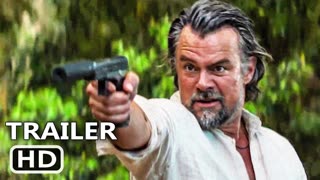 2:26
2:26
movies trailer
1 day agoLONDON CALLING Trailer (2025)
35 -
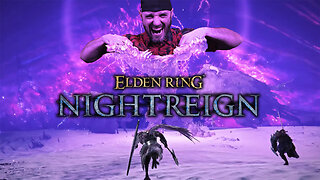 LIVE
LIVE
HELMETFIRE
42 minutes ago🟢NEW UPDATE! This Boss is CRAZY! 🟢 RUMBLE TAKEOVER 🟢
30 watching -
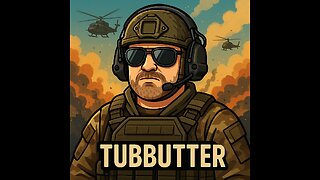 LIVE
LIVE
TubButter
1 day ago $0.24 earnedEntering the Warzone! Expect chaos, clutches, & laughs. 😉 #Warzone #BR #Live #Verdansk #TubButter
120 watching -
 1:34:09
1:34:09
Glenn Greenwald
3 hours agoWill Tulsi Remain as DNI? Is Bombing Hospitals Permitted Only When Israel Does It? Plus: Glenn Takes Your Questions on Locals | SYSTEM UPDATE #472
104K65 -
![[Day 34/90] First time playing 7 Days To Die + Join Up!](https://1a-1791.com/video/fww1/fa/s8/1/v/8/3/U/v83Uy.0kob-small-Day-3490-First-time-playing.jpg) LIVE
LIVE
Deteej
26 minutes ago[Day 34/90] First time playing 7 Days To Die + Join Up!
57 watching -
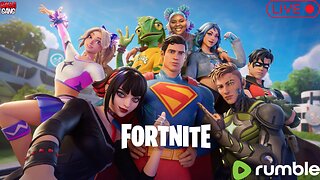 LIVE
LIVE
Cheyballa718
1 hour agoNew Fortnite Update! Road to 100 Followers! 6/100 Followers
48 watching -
 DVR
DVR
RiftTV/Slightly Offensive
5 hours agoJuneteenth CANCELED, Trump Officially Starts Iran War?! | The Rift | Jay Dyer + Anna Perez + Luigi
11.2K6 -
 LIVE
LIVE
megimu32
1 hour agoON THE SUBJECT: Warped Tour is Back... But Not Without Baggage
117 watching -
 47:18
47:18
Donald Trump Jr.
5 hours agoWe're Working on a Holiday, A Special Juneteenth Edition of Triggered! | TRIGGERED Ep.251
128K94 -
 1:02:25
1:02:25
BonginoReport
4 hours agoDems Boycott Probe on Biden’s Fitness to Serve w/ Sean Spicer - (Ep.73)
49.1K35